Tropical rainforests play a crucial role in regulating global temperatures.
These lush, vibrant ecosystems are not just breathtaking places to explore but also pivotal in maintaining environmental balance.
As vital sources of oxygen and a myriad of minerals, they form a complex web of life.
Home to an incredible array of tropical rainforest animals and birds, these forests are biodiversity hotspots.
The interdependence between the flora and fauna within these rainforests is essential for ecological stability.
From the tiniest insects to the majestic jaguars, every creature contributes to the rainforest’s unique and dynamic environment.
Exploring the rainforest reveals the intricate connections that sustain our planet’s health and diversity.
Tropical Rainforest Animals
Some tropical rainforest animals are found in various layers of the jungle, including the large flying fox, king colobus, crowned eagle, and several others.
1. Large Flying Fox

The Large Flying Fox thrives in the tropical rainforest’s canopy layer.
Contrary to popular belief, this bat relies more on its keen eyesight than echolocation to find food, primarily feasting on nectar, fruits, and flowers.
It stands out as one of the largest bat species globally, showcasing the rainforest’s ability to support diverse life forms.
2. King Colobus
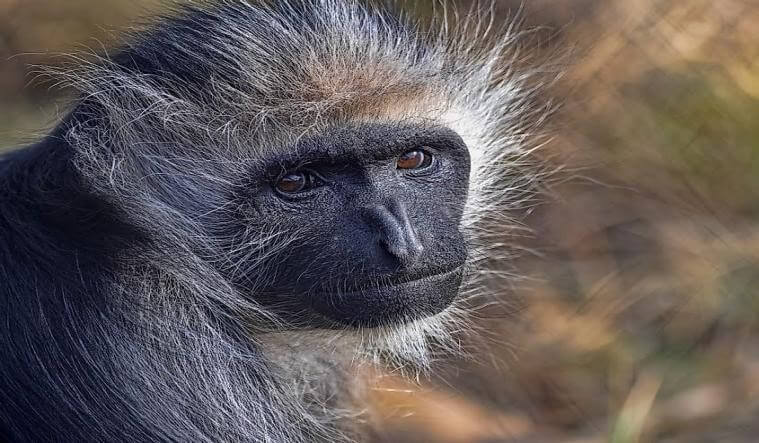
A striking primate native to Africa, the King Colobus, or Western Black and White Colobus, is easily recognized by its contrasting black and white fur.
Its distinct features, like the oval eye sockets and narrow superciliary ridges, exemplify the specialized adaptations of tropical rainforest animals.
3. Crowned Eagle
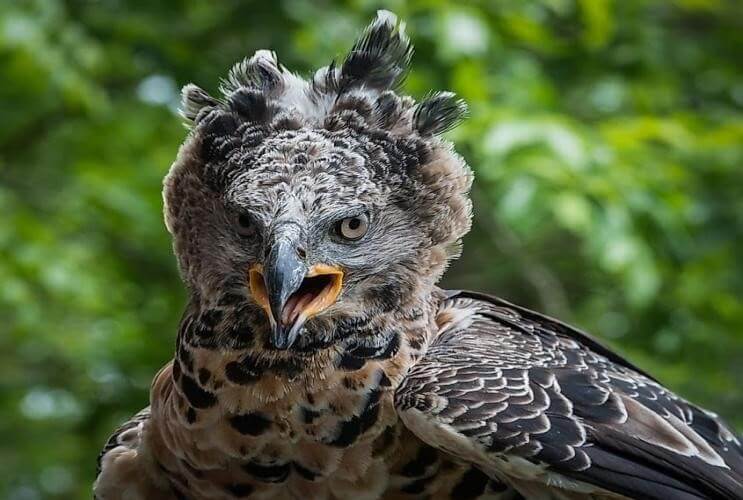
Dominating the emergent layer of the rainforest, the Crowned Eagle is a formidable bird of prey in Africa.
Known for its strength and predatory skills, it primarily feeds on small ungulates, primates, birds, and lizards, playing a crucial role as a top predator in its ecosystem.
4. Kinkajou

The nocturnal and arboreal Kinkajou, found in the Central and South American rainforests, is an intriguing frugivorous mammal.
Unfortunately, it faces threats due to hunting, highlighting the need for conservation efforts in rainforests.
5. Great Hornbill
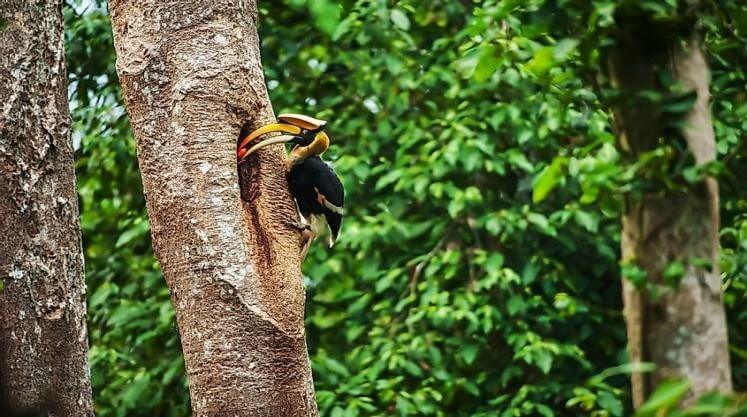
Among the largest and most vulnerable bird species in the tropical rainforests of the Indian subcontinent and Southeast Asia, the Great Hornbill’s diet includes small mammals, birds, and reptiles.
Its long lifespan, reaching up to 50 years in captivity, is a testament to the complexity of rainforest ecosystems.
6. Three-toed sloth

The Brown-Throated Three-Toed Sloth, residing in the canopies of Central and South America, is an emblem of rainforest diversity.
This slow-moving creature, with its three distinct claws, showcases the unique adaptations of tropical rainforest animals.
7. Spider Monkey
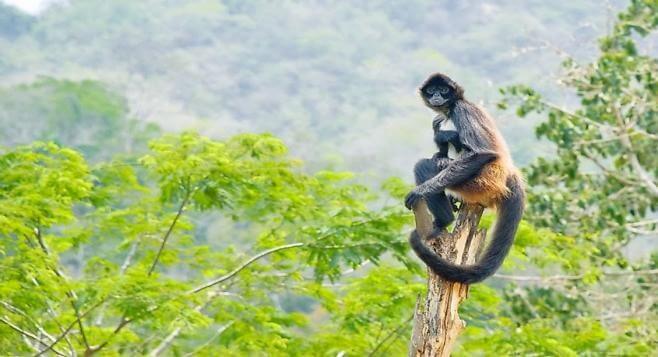
Named for its spider-like appearance when hanging by its tail, the Spider Monkey utilizes its long, thin arms and prehensile tail to navigate the forest canopy.
This group of monkeys perfectly exemplifies the physical adaptations necessary for survival in the diverse rainforest environment.
8. Keel-Billed Toucan
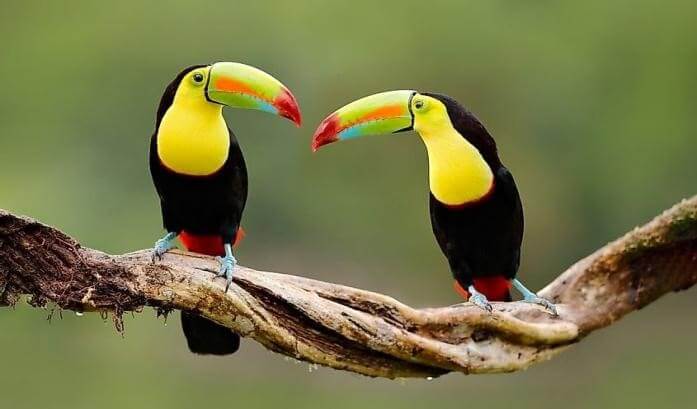
The Keel-Billed Toucan, also known as the Rainbow-Billed Toucan, is renowned for its vibrant plumage.
Residing in tree cavities, it adds a splash of color to the rainforest and is a prime example of the visual diversity among tropical rainforest animals.
9. African Grey Parrot
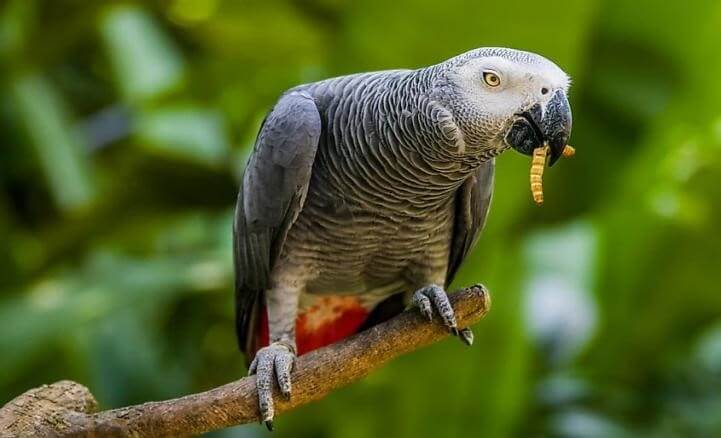
Native to the regions of Africa, the species are found at the edge of the dense forest and in open savanna areas.
One of the fascinating things about the African grey parrot, “the Einstein of the bird’s world,” is its ability to make sounds and talk.
These birds talk non-stop and are widely considered to be the perfect pet.
10. Boa Constrictor
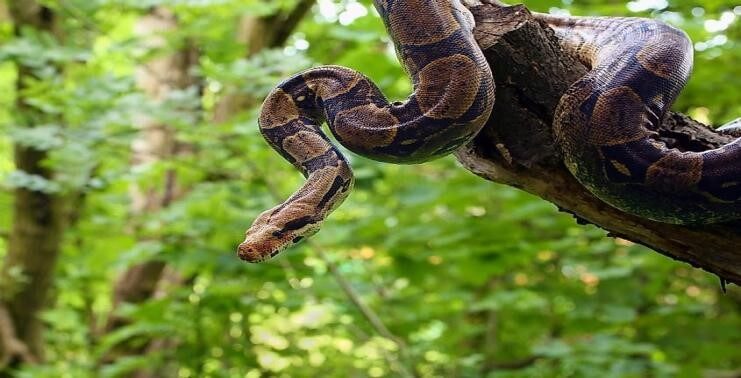
Contrary to some misconceptions, Boa Constrictors are not commonly used for rat control in homes.
These snakes, native to South America, showcase incredible camouflage abilities, adapting their patterns and coloring to various habitats.
They highlight the adaptability and diversity of life in the rainforest.
11. South American Coati
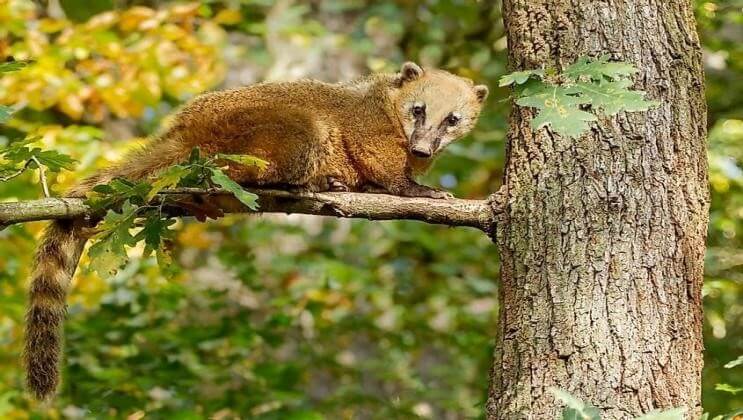
The South American Coati, a member of the raccoon family, is identified by its reddish-brown fur, long banded tail, and distinctive snout.
This species, originating from Native American words meaning ‘belt’ and ‘nose,’ showcases the rich linguistic and biological heritage of the rainforest regions.
12. Poison Dart Frog
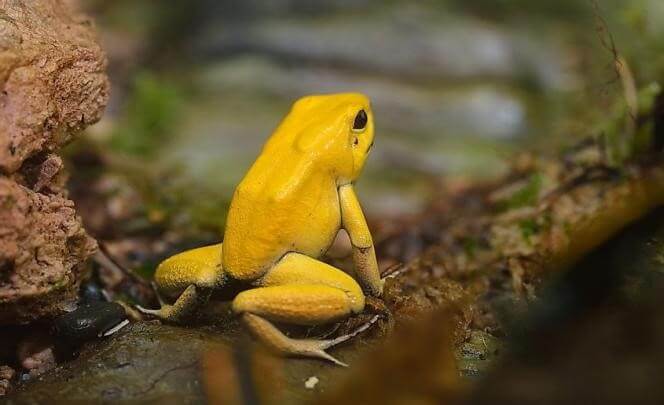
Known for their vibrant colors, Poison Dart Frogs use these hues as a warning sign to predators.
These small amphibians, although not naturally aggressive, possess potent toxins, emphasizing the rainforest’s role in hosting a variety of defense mechanisms among its inhabitants.
13. Jaguar

The Jaguar, a magnificent feline, ranges from Central America to northern Argentina and Paraguay.
Larger and sturdier than leopards, Jaguars are apex predators in the rainforest ecosystem, playing a critical role in maintaining the balance of their environment.
14. Western Lowland Gorilla

One of the most unique and widespread gorilla subspecies, the western lowland gorilla is nestled in Cameroon.
Apart from that, their population can also be found in the Central African Republic, the Democratic Republic of Congo, and Equatorial Guinea, as well as in large areas in Gabon and the Republic of Congo.
The best way to recognize these gorillas is by their brown-grey coats and auburn chests.
They have a huge skull and a more pronounced brow ridge.
15. Sumatran Rhinoceros

The Sumatran Rhino, the smallest of the living rhinoceroses, is a unique inhabitant of the rainforest with its two horns and dense covering that changes color with age.
This species, now threatened due to habitat loss, highlights the urgent need for conservation in rainforest areas.
16. Tapir
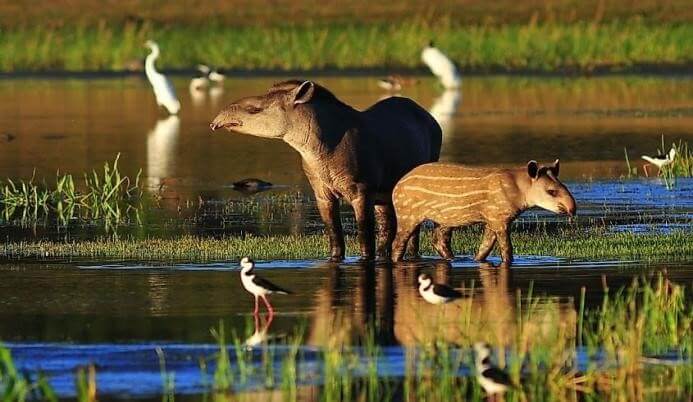
Often mistaken for pigs or anteaters, the Tapir is one of the largest native land mammals of South America.
Closely related to rhinos and horses, these ‘living fossils’ have survived numerous extinctions, demonstrating the resilience and evolutionary history of tropical rainforest animals.
17. Okapi
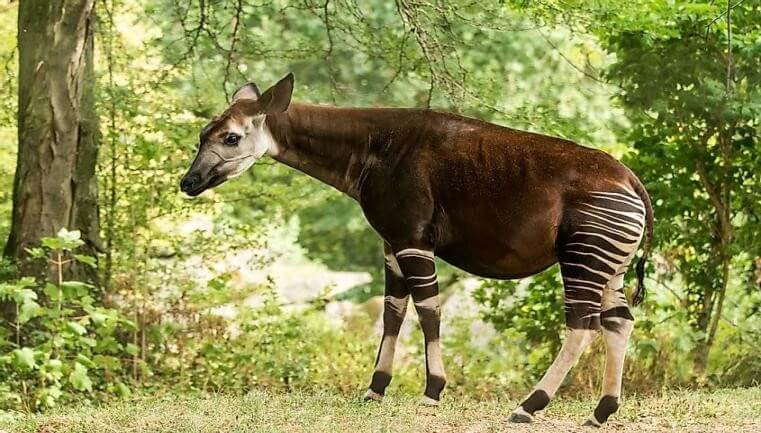
If one were to look at the Okapi, the first thing that would come to mind is a Zebra.
With its reddish brown and cream stripes on its hindquarters, it does seem like one.
But its closest cousin is the Giraffe! Surprised right? It is the only surviving relative of the giraffe.
Tropical Rainforest Plants
There are a million kinds of plant species found in the tropical rainforest that offer food and shelter to animals.
Plants like orchids are rare and supply oxygen to the world; they thrive in humid environments.
1. Epiphytes
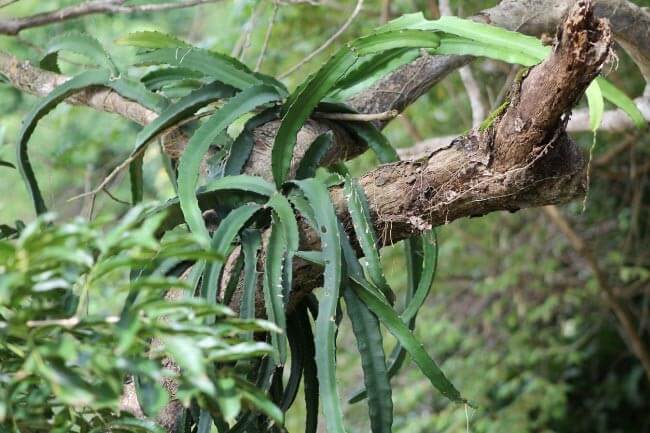
These plants, living ‘upon’ other plants, capture water and nutrients from the air and surrounding debris.
They showcase the innovative survival strategies in rainforest ecosystems.
2. Bromeliads

Bromeliad thrives in the tropics and sun-kissed climates, offering a delightful touch to a home.
The plant can be grown as a houseplant and does bring a unique texture and color to a garden.
The plant does have an unusual appearance and can produce a flower or inflorescence.
3. Orchids

With a distinctive flower structure, orchids are a prime example of the incredible diversity of plant life supporting the rainforest ecosystem.
Their intricate pollination mechanisms are crucial for maintaining the rainforest’s ecological balance.
4. Acai Palm
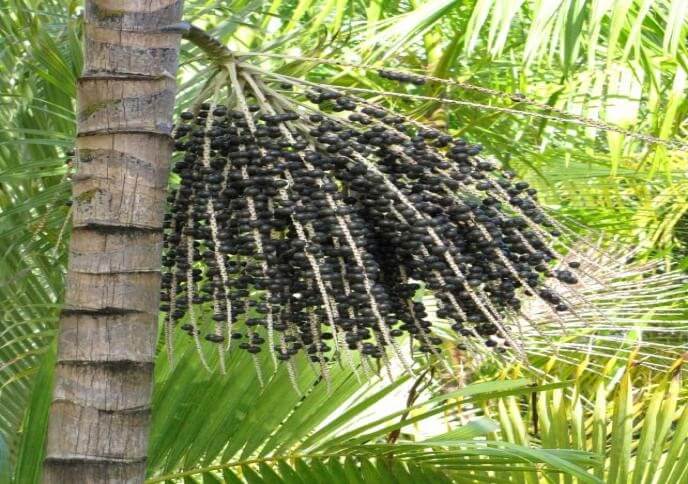
Known for its nutritious berries, the Acai Palm is a staple in the rainforest food web, highlighting the interdependence of flora and fauna in these ecosystems.
5. Carnauba Palm
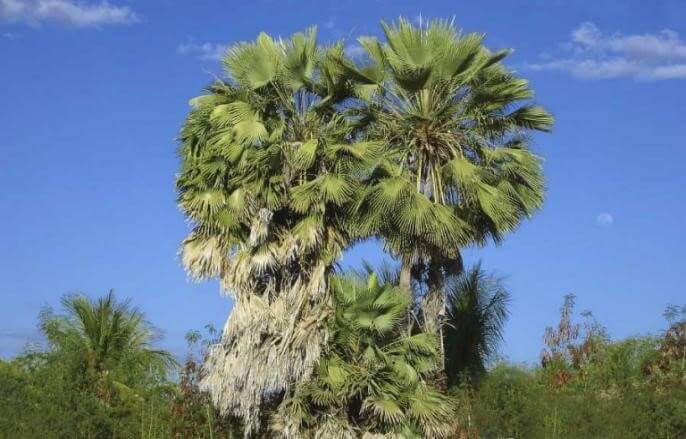
Native to Brazil, this palm is known for its water-resistant wax, illustrating the variety of resources rainforest plants provide.
6. Rattan Palm

ts robust, vine-like structure demonstrates the adaptation of rainforest plants to different ecological niches, supporting a variety of animal life.
7. Walking Palm

Contrary to popular belief, these palms do not ‘walk.’ However, their unique root system allows them to stabilize in the rainforest’s nutrient-poor soil, showcasing the rainforest flora’s adaptability.
8. Amazon Water Lily

Also known as Victoria Amazonica, the Amazon waterlily creates showy, circular foliage, and the leaves are called lily pads that lie flat on the water’s surface.
Found in its natural habitat of the Amazon, it is often seen growing under glass in the UK.
9. Rubber Tree
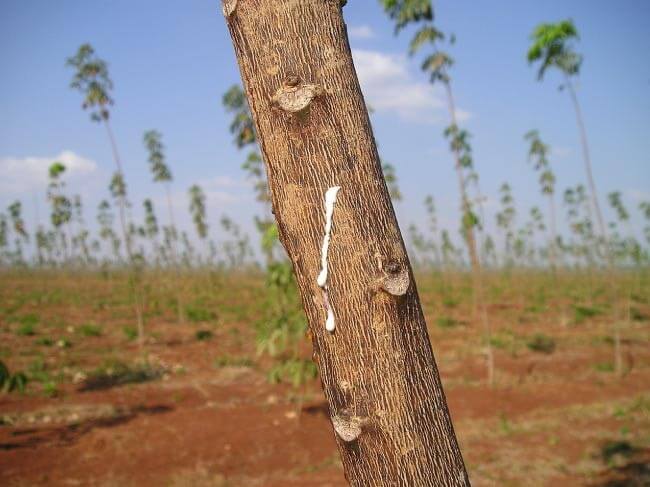
The unusual-looking varietal native to the tropics of Southeast Asia, the rubber plant is known as the Ficus elastica.
It flaunts its majestic oval-shaped leaves with a rich emerald hue and goes up to 100 feet in its natural surroundings.
10. Bougainvillea

This vibrant plant, commonly seen in tropical and subtropical regions, is known for its beautiful clusters of colorful bracts, which surround tiny flowers.
Although not native to rainforests, its adaptability allows it to thrive in a variety of warm climates.
The Bougainvillea’s bracts come in shades of purple, red, pink, orange, and white, adding a splash of color to any landscape.
11. Indian Timber Bamboo

Native to the Indian subcontinent, Indochina, Tibet, and Yunnan, this species of bamboo is known for its robust growth, reaching up to 20 meters.
Valued for its strength, it is widely used in construction and scaffolding.
Indian Timber Bamboo plays a significant ecological role in preventing soil erosion and providing habitat for wildlife.
12. Vanilla Orchid

Grown primarily in Central and South America, the Vanilla Orchid is an epiphyte that climbs up other trees.
It thrives in high humidity and temperatures, forming part of a rich ecosystem.
The Aztecs cherished vanilla for its flavor, derived from the orchid’s seed pods.
This orchid’s pollination process, often involving specific bee species, is crucial for vanilla pod production.
13. Bucket Orchid
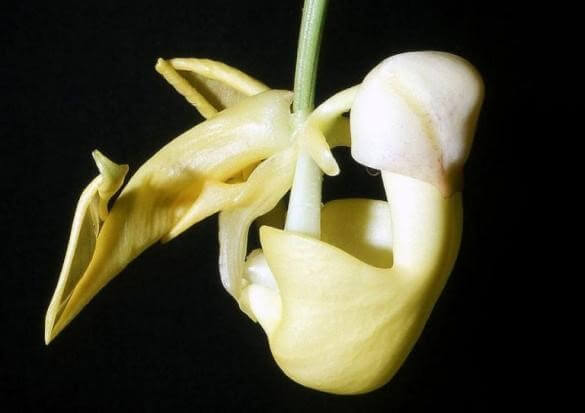
Comprising 42 species, the Bucket Orchid, found in South America and Trinidad, is notable for its intricate pollination mechanism involving orchid bees.
The plant’s structure facilitates a unique symbiotic relationship where it provides fragrance for the bees, which in turn aid in its pollination.
14. Silky Oak
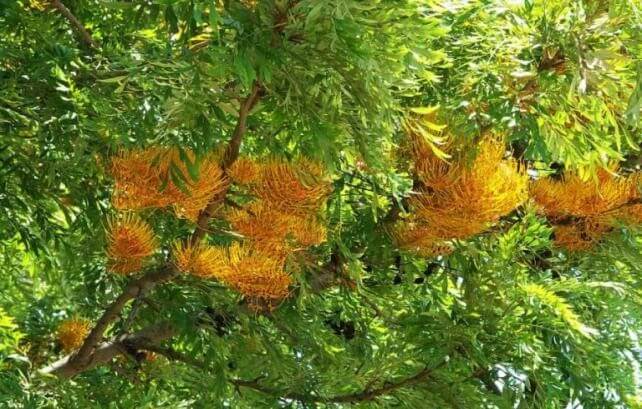
The Silky Oak, predominantly found in Australian bushland, is known for its light grey, furrowed bark and fast growth.
While not a typical rainforest species, it adapts to various climates and soils.
Its distinctive foliage and timber are valued in landscaping and woodworking.
15. Corpse Flower
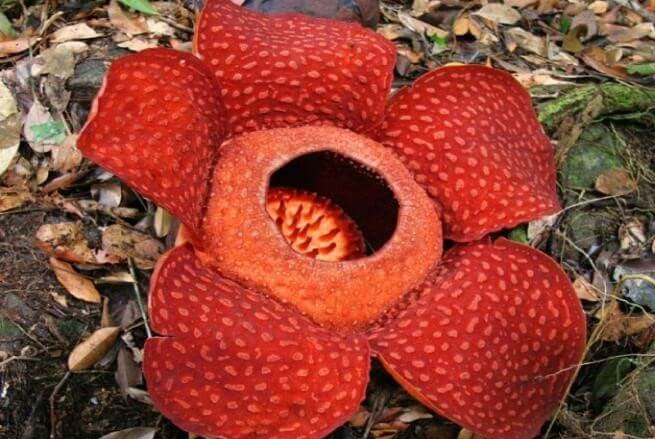
This rare plant, native to the rainforests of Borneo and Sumatra, is known for producing the largest individual flower in the world.
It emits a strong odor of decaying flesh, attracting carrion flies for pollination.
The Corpse Flower, a parasitic plant, lacks visible leaves, stems, or roots.
16. Pitcher Plants

Found in nutrient-poor soils, Pitcher Plants are fascinating carnivorous plants.
Their modified leaves form a pitfall trap to capture insects, from which they derive necessary nutrients.
The Nepenthes species, known for their varied and elaborate pitcher shapes, are a prime example of nature’s ingenuity in adaptation.
17. Heliconia
![]()
These brightly colored flowering plants, native to the Americas, are often pollinated by hummingbirds.
Known for their unique inflorescences resembling lobster claws, Heliconias are vital to rainforest ecosystems, providing nectar for birds and visual appeal to the forest undergrowth.
18. Kapok
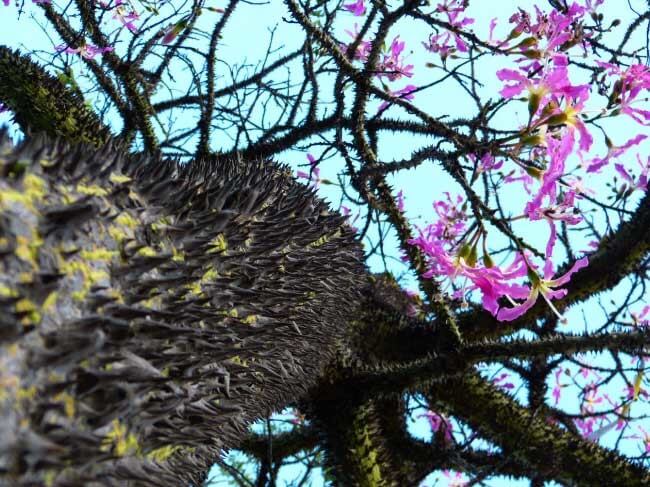
Towering in the emergent layer of rainforests in South America, Asia, and Africa, the Kapok Tree is distinguished by its massive height and broad buttress roots.
This tree plays a crucial ecological role, offering habitat for numerous rainforest species and contributing significantly to the forest canopy’s structure.

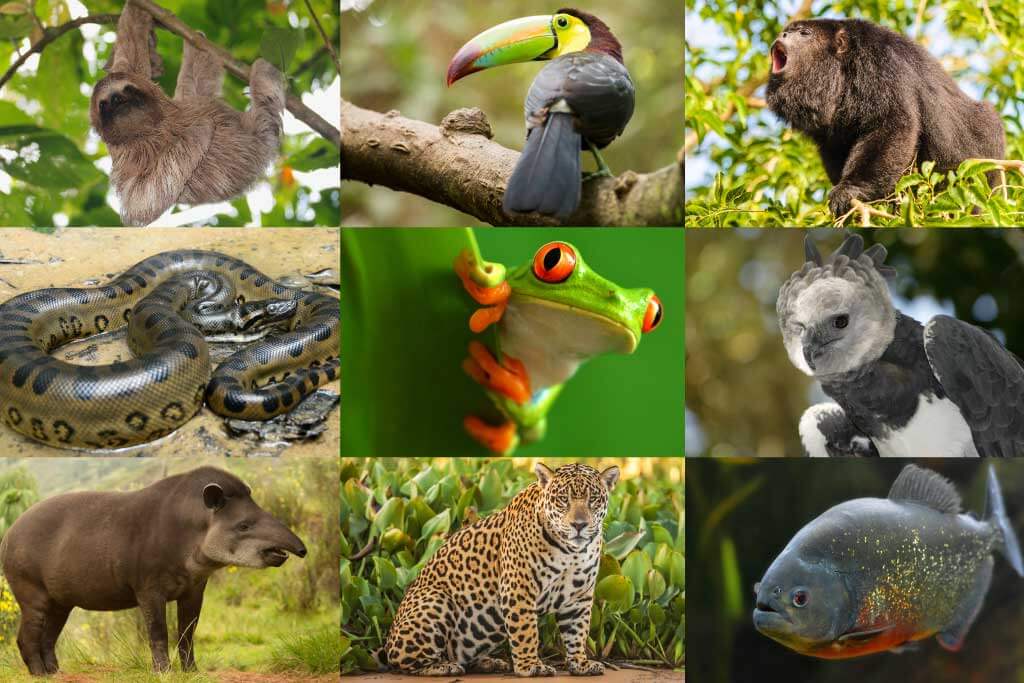
A nice contribute, more Greece on your elbow to include Nigerian founa and flora.